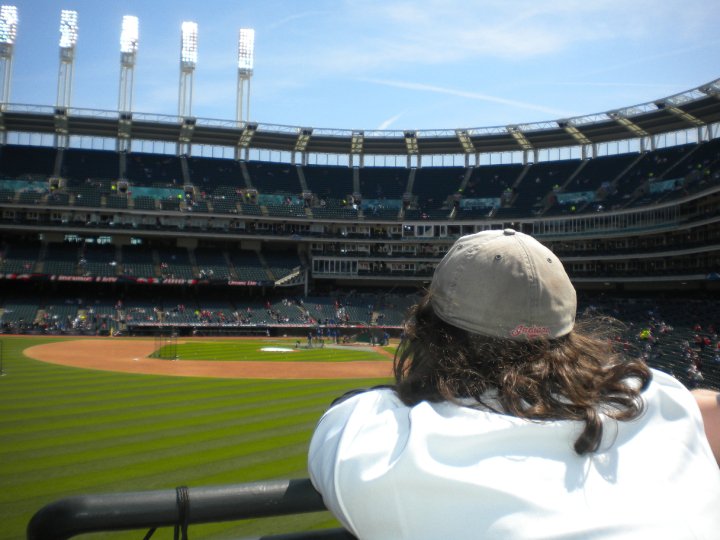 Spring Training is just around the corner, which is a warm and welcoming thought since six inches of snow fell outside my house Thursday night. The baseball offseason, which is usually seems long, has felt even longer this season, in large part because of the personnel moves that the Indians made and my eagerness to see what the new on-field product will look like.
Spring Training is just around the corner, which is a warm and welcoming thought since six inches of snow fell outside my house Thursday night. The baseball offseason, which is usually seems long, has felt even longer this season, in large part because of the personnel moves that the Indians made and my eagerness to see what the new on-field product will look like.
With the only Indians news from this week being a couple of minor signings and a former player signing with the Evil Empire, I have a good opportunity to finish what I started last week. In last week’s View from the Porch, I put together a 13-man roster of the top position players born in the state of Ohio. It’s an article I had a lot of fun with and one that I hope you enjoyed.
The history of baseball is important to me. I had just turned 15 when my grandfather passed away, and I never met my grandfather on my father’s side. Even though I already enjoyed history in school, and used it as a second major in college, I never sat down with my grandfather, a life-long Cleveland resident, to ask about his time in World War II or about Cleveland baseball history. As I look back, it’s one of my biggest regrets. With what’s left of the greatest generation growing smaller and smaller by the day, having the opportunity to research and write about Ohio’s rich baseball tradition (and having somebody read it!) is an honor.
I learned a lot last week writing about the position players. I never knew the story of Ed Delahanty. Without that research, I never would have learned of deaf baseball player William “Dummy” Hoy. The news that Ty Cobb could have played in Cleveland had Naps’ management agreed to trade Elmer Flick was something I was unaware of.
As talented and successful as last week’s lineup and bench players were, it’s the pitching that is the backbone of any team. Here is my list of the all-Ohio pitching staff:
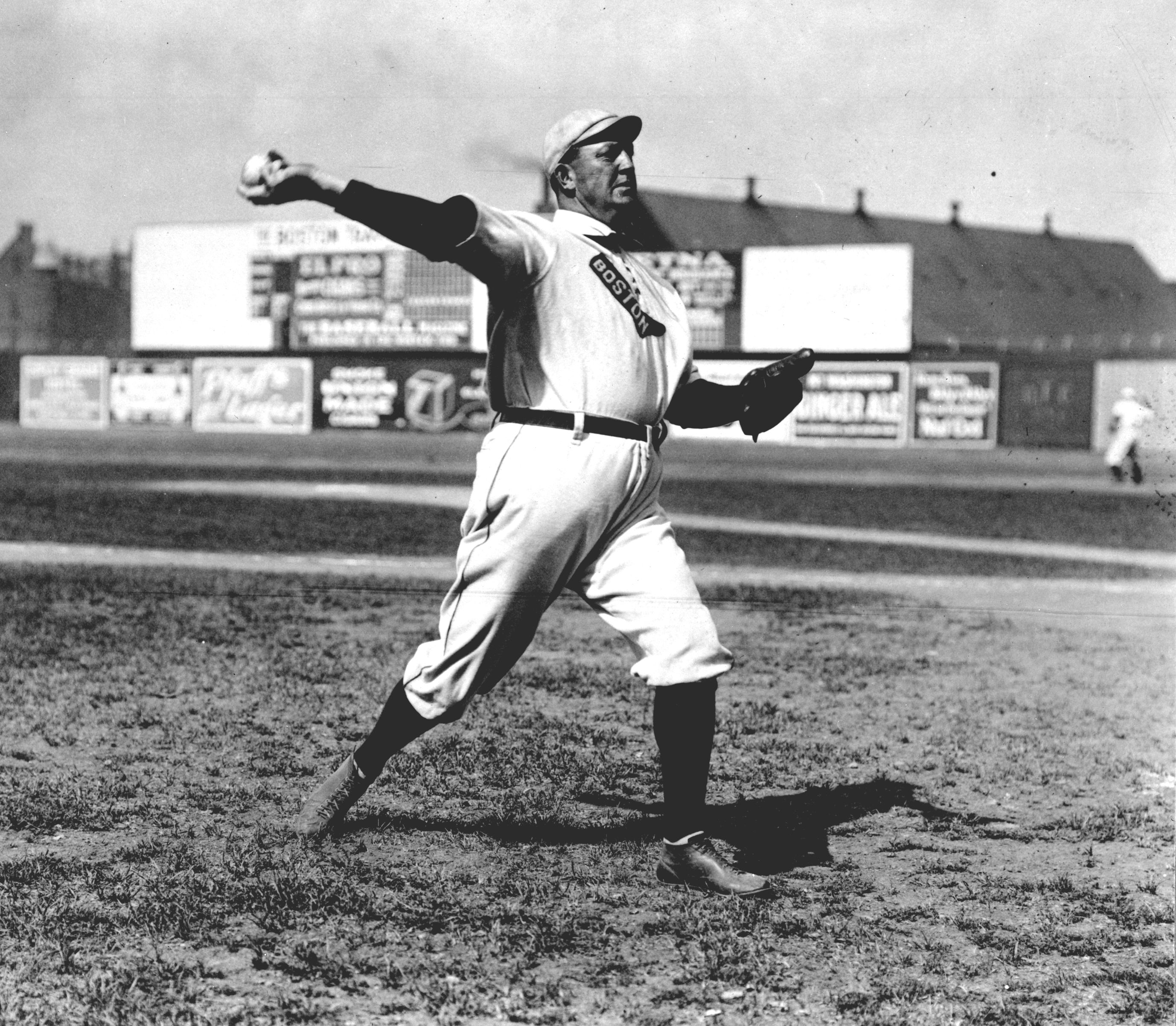 #1 Starter – Cy Young – Perhaps the best pitcher in the history of the game, Denton “Cy” Young is the ace of the all-Ohio starting rotation. Born in Gilmore, a small community in Tuscarawas County, about 35 minutes south of New Philadelphia, Young was found by a minor league team that played in Canton in 1889. The following year, Young made his Major League debut with the Cleveland Spiders of the National League, pitching a three-hit shutout. In his career, Young pitched for the Cleveland Spiders, St. Louis Perfectos, St. Louis Cardinals, Boston Americans, Boston Red Sox, Cleveland Naps, and Boston Rustlers.
#1 Starter – Cy Young – Perhaps the best pitcher in the history of the game, Denton “Cy” Young is the ace of the all-Ohio starting rotation. Born in Gilmore, a small community in Tuscarawas County, about 35 minutes south of New Philadelphia, Young was found by a minor league team that played in Canton in 1889. The following year, Young made his Major League debut with the Cleveland Spiders of the National League, pitching a three-hit shutout. In his career, Young pitched for the Cleveland Spiders, St. Louis Perfectos, St. Louis Cardinals, Boston Americans, Boston Red Sox, Cleveland Naps, and Boston Rustlers.
It’s hard to find a pitcher with a better resume than Young. During his 22-year career, Young pitched 7,356 innings, won 511 games, and posted a 2.63 career ERA. Young led the league in wins five times, WHIP (walks + hits per innings pitched) seven times, ERA twice, and threw a complete game in 749 of his 815 starts. Young was worth 160.8 wins above replacement player in his career, which ranks second all-time behind Babe Ruth.
The Baseball Writers’ Association of America voted Young into the Hall of Fame in 1937, with 76.1 percent of the vote.
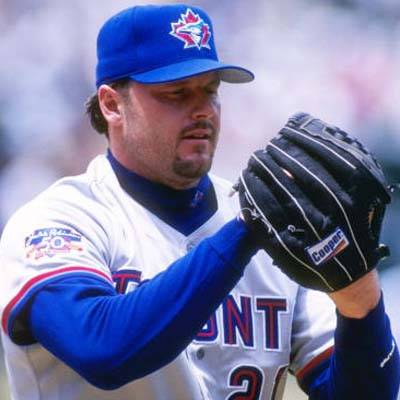 #2 Starter – Roger Clemens – Despite the performance-enhancing drug controversy after the end of his career, William Roger Clemens still belongs on this team. The Dayton native was one of the game’s greats, winning 354 games and posting a career ERA of 3.12. Clemens was the 1986 American League Most Valuable Player, won seven Cy Young awards, led the league in wins four times, in ERA seven times, and strikeouts five times. Clemens pitched for the Boston Red Sox, Toronto Blue Jays, New York Yankees, and Houston Astros. He was an 11-time All-Star. His 4,672 strikeouts rank third all-time and he is ninth in wins with 354.
#2 Starter – Roger Clemens – Despite the performance-enhancing drug controversy after the end of his career, William Roger Clemens still belongs on this team. The Dayton native was one of the game’s greats, winning 354 games and posting a career ERA of 3.12. Clemens was the 1986 American League Most Valuable Player, won seven Cy Young awards, led the league in wins four times, in ERA seven times, and strikeouts five times. Clemens pitched for the Boston Red Sox, Toronto Blue Jays, New York Yankees, and Houston Astros. He was an 11-time All-Star. His 4,672 strikeouts rank third all-time and he is ninth in wins with 354.
In terms of pitchers, Clemens ranks third in WAR, behind Young and Walter Johnson. Obviously, in recent years, Clemens’s career has been tarnished by PED scandals, specifically, a perjury trial that alleged that he lied when testifying before Congress on PEDs in baseball. Clemens was eligible for the Hall of Fame for the first time in 2013 and received 37.6 percent of the vote.
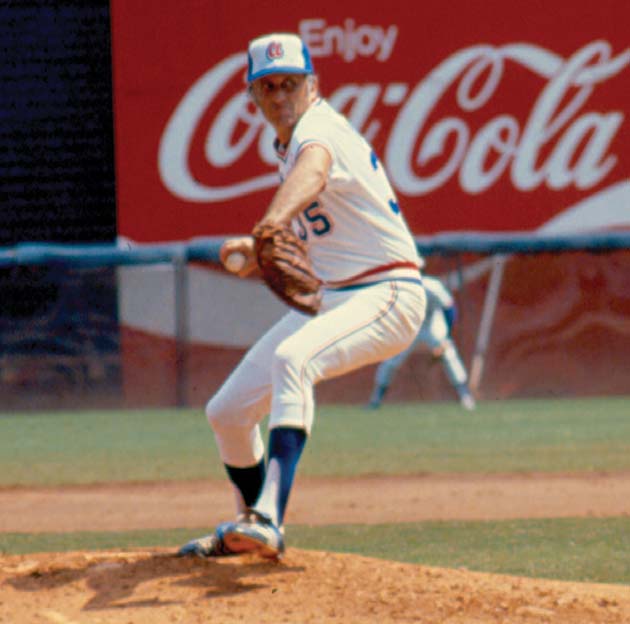 #3 Starter – Phil Niekro – Phil Niekro, arguably the best knuckleball pitcher to ever the play the game, is one of five pitchers born in Ohio to be enshrined in the Hall of Fame. From Blaine, a small community about 10 minutes from the West Virginia border near Wheeling, Niekro put together a phenomenal career. Over 24 seasons with the Milwaukee Braves, Atlanta Braves, New York Yankees, Cleveland Indians, and Toronto Blue Jays, Niekro won 318 games with a 3.35 ERA. He threw over 300 innings in a season four times in his career, all over the age of 35, including throwing over 1,000 innings from ages 38-40.
#3 Starter – Phil Niekro – Phil Niekro, arguably the best knuckleball pitcher to ever the play the game, is one of five pitchers born in Ohio to be enshrined in the Hall of Fame. From Blaine, a small community about 10 minutes from the West Virginia border near Wheeling, Niekro put together a phenomenal career. Over 24 seasons with the Milwaukee Braves, Atlanta Braves, New York Yankees, Cleveland Indians, and Toronto Blue Jays, Niekro won 318 games with a 3.35 ERA. He threw over 300 innings in a season four times in his career, all over the age of 35, including throwing over 1,000 innings from ages 38-40.
Bobby Murcer once said that trying to hit Niekro’s knuckleball was like “trying to eat Jell-O with chopsticks”. Richie Hebner said, “Hitting Niekro’s knuckleball is like eating soup with a fork”.
Niekro pitched in five All-Star games, won five Gold Glove awards, and ranks 10th in career WAR for pitchers. He threw a no hitter on August 5, 1973 against the San Diego Padres. The BBWAA voted Niekro into the Hall of Fame in 1997 with 80.3 percent of the vote.
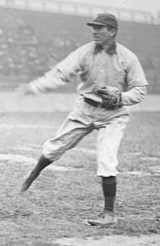 #4 Starter – Sam Leever – Sam Leever might have the most intriguing set of statistics of any pitcher on this roster. Leever was born in Goshen, a small township in Clermont County, about 40 minutes northeast of Cincinnati. In 13 seasons, Leever’s highest ERA was 3.18, his first full season when he pitched 379 innings. That season, Leever walked 122 and struck out 121. After the 1899 season, Leever struck out 726 and walked 485 for the rest of his career. Leever won 194 games over his 13-year career, allowing just 29 home runs in 2,660.2 innings. Leever spent his entire career with the Pittsburgh Pirates.
#4 Starter – Sam Leever – Sam Leever might have the most intriguing set of statistics of any pitcher on this roster. Leever was born in Goshen, a small township in Clermont County, about 40 minutes northeast of Cincinnati. In 13 seasons, Leever’s highest ERA was 3.18, his first full season when he pitched 379 innings. That season, Leever walked 122 and struck out 121. After the 1899 season, Leever struck out 726 and walked 485 for the rest of his career. Leever won 194 games over his 13-year career, allowing just 29 home runs in 2,660.2 innings. Leever spent his entire career with the Pittsburgh Pirates.
Leever holds the 18th best winning percentage of any pitcher in the history of baseball. After his first full season, where he went 21-23, Leever went 173-77 from 1900-1910. With a 2.9 K/9, Leever still managed a career 2.47 ERA, in an era where defense was nowhere near as advanced as it is now. His inclusion in the rotation is in part because of what he accomplished as a player, but also, in part, because his statistics fascinate me. Of the starting pitchers from Ohio, Leever’s ERA ranks second behind Jack Pfiester. Leever’s sabr.org profile notes that he was often injured, dealing with arm pain throughout his career, which both limited and cut short his playing days.
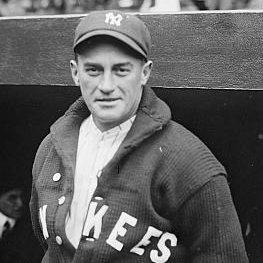 #5 Starter – Urban Shocker - Urbain Jacques Shockcor was born in Cleveland in 1890. Shocker won 187 games over his 13-year career, posting a 3.17 ERA. He threw 200 complete games out of his 317 starts and averaged 250 innings per season. Shocker only played for two teams in his career, the New York Yankees and the St. Louis Browns, winning 20 or more games in four consecutive seasons from 1920-1923.
#5 Starter – Urban Shocker - Urbain Jacques Shockcor was born in Cleveland in 1890. Shocker won 187 games over his 13-year career, posting a 3.17 ERA. He threw 200 complete games out of his 317 starts and averaged 250 innings per season. Shocker only played for two teams in his career, the New York Yankees and the St. Louis Browns, winning 20 or more games in four consecutive seasons from 1920-1923.
Shocker sneaks into the rotation based on his versatility and the numbers he posted during the prime of his career.
About a month after Shocker’s final game, he contracted pneumonia and died from complications at the age of 38.
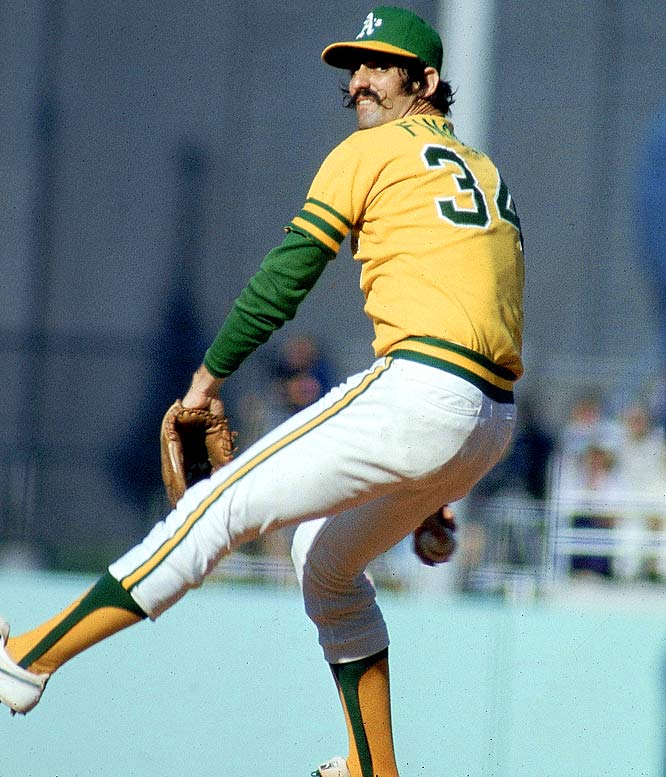 Closer – Rollie Fingers – Like the first three starters in the rotation, this pick is a no brainer. Born in Steubenville, a town on the Ohio River near the West Virginia border, Fingers racked up 341 saves during his 17-year career. Fingers played for the Oakland Athletics, San Diego Padres, and Milwaukee Brewers.
Closer – Rollie Fingers – Like the first three starters in the rotation, this pick is a no brainer. Born in Steubenville, a town on the Ohio River near the West Virginia border, Fingers racked up 341 saves during his 17-year career. Fingers played for the Oakland Athletics, San Diego Padres, and Milwaukee Brewers.
In over 1,700 innings, Fingers struck out 1,299 batters and led the league in saves three times. Fingers won three World Series Championships, was the 1974 World Series MVP, was the AL MVP and Cy Young Award winner in 1981, and has an epic handlebar mustache.
Fingers was elected to the Hall of Fame by the BBWAA in 1992, with 81.2 percent of the vote, making him the second relief pitcher to be enshrined. He is 10th on baseball’s all-time saves list.
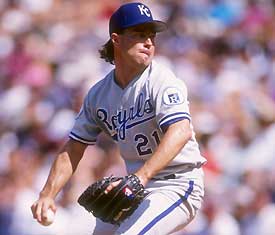 Setup – Jeff Montgomery – For 12 seasons, Jeff Montgomery was an outstanding closer for the Kansas City Royals. Born in Wellston, an area surrounded by state forests and wildlife areas in southeast Ohio, near Athens, where Ohio University is, Montgomery accumulated over 300 saves as a Kansas City Royal. Spending his entire career, except for his brief rookie appearance for the Reds, with the Royals, Montgomery was a three-time All-Star.
Setup – Jeff Montgomery – For 12 seasons, Jeff Montgomery was an outstanding closer for the Kansas City Royals. Born in Wellston, an area surrounded by state forests and wildlife areas in southeast Ohio, near Athens, where Ohio University is, Montgomery accumulated over 300 saves as a Kansas City Royal. Spending his entire career, except for his brief rookie appearance for the Reds, with the Royals, Montgomery was a three-time All-Star.
His best season was 1993, when Montgomery went 7-5 with 45 saves and a 2.29 ERA. In 700 career appearances, covering 868.2 innings, Montgomery recorded 733 strikeouts. He ranks 20th in career saves on baseball’s all-time list.
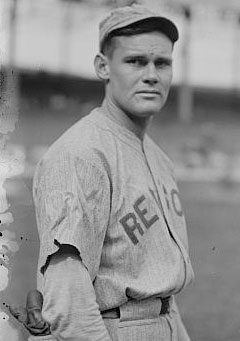 Setup – Dutch Leonard – Every good bullpen needs a left handed setup man. Hubert “Dutch” Leonard should fill the role nicely. Leonard, from Birmingham, a small community just south of the Ohio Turnpike in Erie County, pitched for the Boston Red Sox and Detroit Tigers from 1913-1925. Leonard won 139 games with a 2.76 ERA in his 11 seasons. Leonard’s best season was 1914, when he posted a 0.96 ERA in 36 games, 25 starts, with a 19-5 record.
Setup – Dutch Leonard – Every good bullpen needs a left handed setup man. Hubert “Dutch” Leonard should fill the role nicely. Leonard, from Birmingham, a small community just south of the Ohio Turnpike in Erie County, pitched for the Boston Red Sox and Detroit Tigers from 1913-1925. Leonard won 139 games with a 2.76 ERA in his 11 seasons. Leonard’s best season was 1914, when he posted a 0.96 ERA in 36 games, 25 starts, with a 19-5 record.
His career was cut short because of an ongoing feud with Ty Cobb. Not only did it create dissention in the Tigers’ clubhouse when Cobb played, but Cobb took it out on Leonard when he became manager of the Tigers, once forcing Leonard to throw all nine innings in a game where he allowed 12 runs and 20 hits.
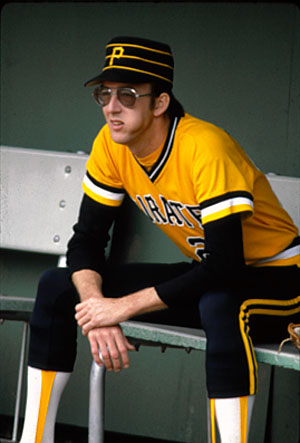 Middle Relief – Kent Tekulve – Kent Tekulve, a Cincinnati native, spent the better part of 16 years in the Major Leagues being a solid, dependable reliever. He spent the majority of his career with the Pittsburgh Pirates, adding in stops with the Philadelphia Phillies and Cincinnati Reds. Tekulve appeared in 1,050 games, which ranks ninth all-time.
Middle Relief – Kent Tekulve – Kent Tekulve, a Cincinnati native, spent the better part of 16 years in the Major Leagues being a solid, dependable reliever. He spent the majority of his career with the Pittsburgh Pirates, adding in stops with the Philadelphia Phillies and Cincinnati Reds. Tekulve appeared in 1,050 games, which ranks ninth all-time.
Tekulve appeared in one All-Star Game, 1980, and picked up 184 saves in his career. He appeared in more than 90 games in a season three times and led the league a fourth time with 85.
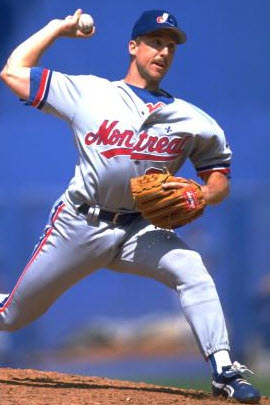 Middle Relief – Jeff Shaw – It’s hard to say what Jeff Shaw’s career numbers would have looked like had he started out as a closer. A Washington Court House native, a Fayette County town about halfway between Columbus and Cincinnati, Shaw pitched for seven seasons before getting the opportunity to close in 1997. He started his career with the Indians, before pitching for the Montreal Expos, Chicago White Sox, Cincinnati Reds, and Los Angeles Dodgers.
Middle Relief – Jeff Shaw – It’s hard to say what Jeff Shaw’s career numbers would have looked like had he started out as a closer. A Washington Court House native, a Fayette County town about halfway between Columbus and Cincinnati, Shaw pitched for seven seasons before getting the opportunity to close in 1997. He started his career with the Indians, before pitching for the Montreal Expos, Chicago White Sox, Cincinnati Reds, and Los Angeles Dodgers.
Shaw was a full-time closer for six seasons and racked up 203 saves in his career. In 633 appearances covering 848 innings, Shaw struck out 545 and walked 234. He played in two All-Star games, 1998 and 2001, and ranks 42nd on the all-time saves list.
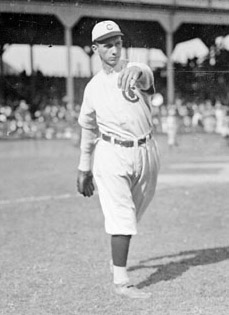 Middle Relief – Jack Pfiester – Jack Pfiester’s story is a tale of what could have been. The Cincinnati native pitched in 149 games over eight seasons before nagging injuries forced the end of his pitching career. Pfiester played from 1903-1911 for the Pittsburgh Pirates and Chicago Cubs, winning two World Series titles with the Cubs. In his six seasons with the Cubs, Pfiester pitched in 143 games and posted a magnificent 1.85 ERA. His career 2.02 ERA ranks fourth all-time.
Middle Relief – Jack Pfiester – Jack Pfiester’s story is a tale of what could have been. The Cincinnati native pitched in 149 games over eight seasons before nagging injuries forced the end of his pitching career. Pfiester played from 1903-1911 for the Pittsburgh Pirates and Chicago Cubs, winning two World Series titles with the Cubs. In his six seasons with the Cubs, Pfiester pitched in 143 games and posted a magnificent 1.85 ERA. His career 2.02 ERA ranks fourth all-time.
In 1908, Pfiester threw a complete game five hitter against the New York Giants while pitching with a dislocated tendon in his forearm. That injury forced him into retirement at the age of 33. He still managed to win 71 games in his shortened career.
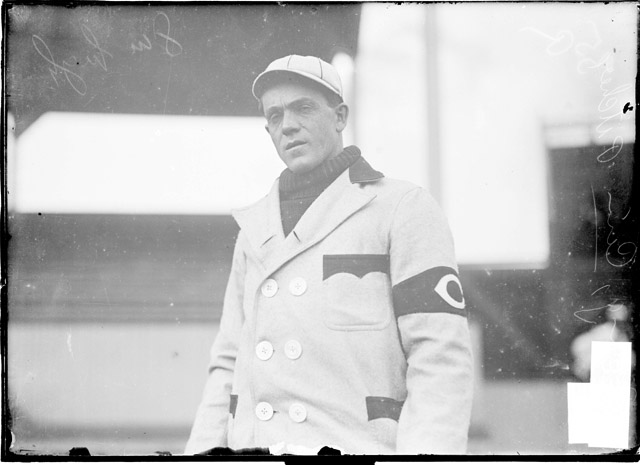
Long Relief – Bob Ewing – George “Bob” Ewing just missed the cut for a spot in the rotation, so making him the long reliever seems the next best thing. Of course, the oldest members of the starting rotation don’t need a long reliever, but Ewing deserves to be on this list. Born in New Hampshire, a small farming community in Auglaize County, about 45 minutes east of the Indiana border and about a half hour southeast of Lima, Ewing won just 124 games over his 11-year career, despite a 2.49 ERA.
Ewing played from 1902-1912 for the Cincinnati Reds, Philadelphia Phillies, and St. Louis Cardinals. He got a late start in the Major Leagues, making his debut at age 29, so that definitely limited his career totals. Ewing went the distance in 205 of his 234 career starts and struck out 998 batters in just over 2,300 innings.
I hope you have enjoyed these articles as much as I enjoyed writing them. I tried to get a mix of new and old, although, it’s clear that Ohio has not produced the same number of Major Leaguers in recent times that it did in the early years of baseball. Some of these players are well known, enshrined in the Hall of Fame and widely regarded as some of the best to have played the game. Others were local celebrities, while others seem to unjustly serve as afterthoughts.
It’s been a great trip down memory lane and the all-Ohio team would be a formidable foe against any other state in the country.